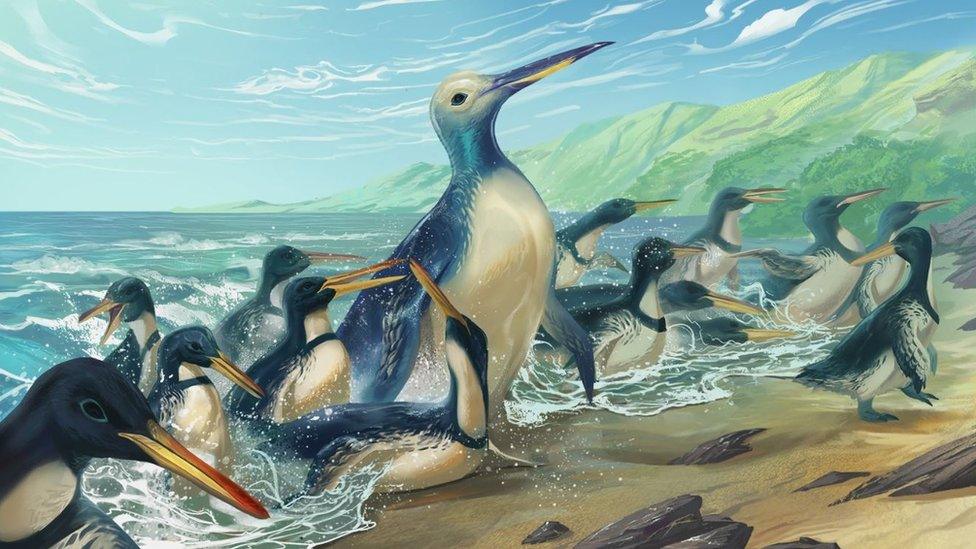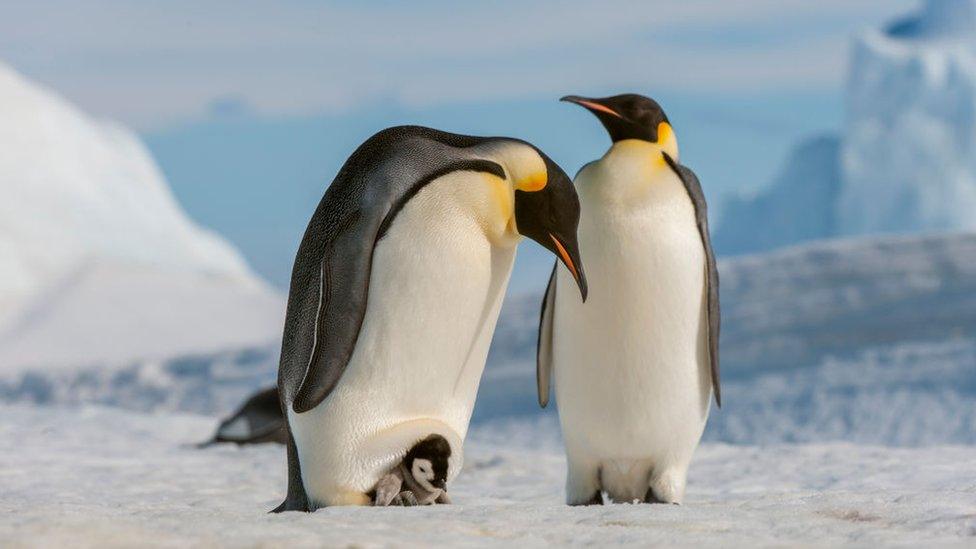Penguins: Largest known ancient species discovered in New Zealand
- Published
- comments

An artist's impression of how the ancient giant penguin might have looked
Scientists have identified what they believe to be the largest penguin that ever lived!
The new discovery was one of two new penguin species found by experts in New Zealand.
It's thought the huge penguin weighed more than 150 kilograms - more than three times the size of the largest living modern species!
The ancient birds are believed to have lived around 57 millions years ago, only a few million years after the end of the dinosaur era.
What's happened?

The ancient penguin is thought to have been three times the size of today's Emperor penguin!
The fossils were originally discovered in beach boulders in North Otago on New Zealand's South Island, between 2016 and 2017.
An international team of scientists from the US, New Zealand and the University of Cambridge in the UK used laser scanners to create digital models of the bones.
They were then able to compare them to other fossil species including flying diving birds such as auks as well as other penguins.
In order to estimate the size of the new species, the team measured hundreds of modern penguin bones and used flipper bone dimensions to predict weight.
They found that the largest flipper bones belong to a penguin that weighed 154 kg!
In comparison, Emperor penguins which are the tallest and heaviest of all living penguins, typically weigh between 22 and 45kg.

An illustration showing the size of the two new ancient species compared to a modern emperor penguin on the right
The team decided the name the huge penguin species, Kumimanu fordycei.
The smaller second penguin species, Petradyptes stonehousei, weighed in at around 50kg.
Scientists were excited by the new penguin discoveries.
Dr Daniel Field from the University of Cambridge, said: "Kumimanu fordycei would have been an utterly astonishing sight on the beaches of New Zealand 57 million years ago, and the combination of its sheer size and the incomplete nature of its fossil remains makes it one of the most intriguing fossil birds ever found."
"Hopefully future fossil discoveries will shed more light on the biology of this amazing early penguin," he added.
